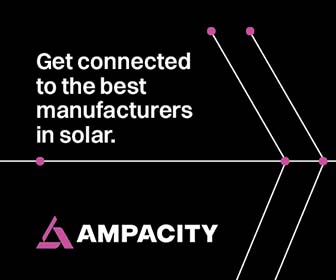Navigating Sensitive Environments for Solar Construction
The global shift towards clean energy — exemplified by the widespread adoption of solar power — is not only a beacon of hope for a sustainable future, but also comes with heightened expectations for responsible project execution. From the initial planning stages to the completion of every solar construction site, a commitment to environmental stewardship is essential. This commitment becomes even more crucial when dealing with particularly sensitive environments which require special measures to minimize ecological impact. Understanding these environments and proactively addressing the potential challenges they pose are critical components of successful solar construction planning and execution.

Sensitive environments impacting solar construction
Solar construction companies find themselves at the forefront of environmental responsibility, especially in areas with heightened ecological sensitivity. Several environmental challenges may arise when developing a solar farm.
Protected species
In the pursuit of solar energy, companies may encounter the need to protect endangered species or delicate ecosystems. Mitigation measures could include refraining from using certain herbicides, relocating plants or animals, avoiding specific areas, suspending operations during critical seasons, and implementing various protective measures. This stresses the delicate balance required to harmonize solar development with existing ecosystems.
Environmental regulations
National and regional regulations impose minimum requirements for environmental protection, with a special emphasis on sensitive areas like wetlands. Additional regulations may vary based on the type of land and ownership status. Solar installations on public lands come with their own set of guidelines and restrictions, adding an extra layer of complexity to the regulatory landscape.
Altering the ecosystem
Large-scale solar installations bring about both visual changes and significant environmental transformations. The introduction of shade, redirection of water flow, and other alterations can impact local growing conditions. If the construction access route involves traversing wetlands, pastures, or farmland, the responsibility for full restoration post-project completion may fall on the solar construction company. However, with foresight and careful planning, the impact can be mitigated.
 Migration corridors
Migration corridors
Solar installations have the potential to disrupt both habitats and migration corridors through the installation of fencing or other structures. Such disruptions can have long-lasting effects on plant and animal populations by interfering with mating processes or the transportation of seeds. Balancing the needs of solar construction with the preservation of these critical corridors is a delicate task that requires strategic planning.
Effective strategies for navigating sensitive environments
Fortunately, there are practical and effective strategies to mitigate the challenges associated with solar construction in particularly sensitive environments. These strategies go beyond mere compliance with regulations, and embody a proactive commitment to environmental preservation.
Preserve biodiversity
Local ecosystems, often unnoticed by the naked eye, play a crucial role in supporting countless native species. Understanding and protecting these ecosystems are essential for a thriving environment. Measures such as preventing the transfer of invasive species and planting pollinator-friendly native species can help mitigate disruption and contribute to a healthier ecosystem.
Maintain wildlife habitats
Implementing wildlife-friendly fencing, thoughtfully positioning solar panels, and considering migration corridors during installation are key tactics to minimize disruption. Preserving as much existing vegetation as possible and restoring any disrupted areas with native species not only safeguards wildlife habitats, but also fosters long-term sustainability.
Protect water quality
The implementation of a Stormwater Pollution Prevention Plan (SWPPP) is crucial to defining and implementing measures for reducing erosion and runoff. Strategies such as fencing, drainage systems, bales, and other tactics help keep waterways clean. Recognizing that the SWPPP is a living document that must be regularly updated ensures ongoing protection of water quality.

Collaborate with experienced site access providers
Engaging companies with extensive experience in managing clearing requirements and executing large-scale civil construction is necessary for successful utility-scale solar projects. While many providers may claim that they are able to handle a project due to their possession of construction equipment, the unique challenges of solar sites require specialized knowledge. A qualified site access partner with experience in navigating solar construction in sensitive environments can bring a strategy that minimizes impact and complies with regulatory requirements.
Collaborating with experienced site access providers not only ensures the work is done right the first time, but also reduces the likelihood of incurring penalties or fines. Such a partner will bring extensive experience from various large-scale utility projects, having encountered and effectively addressed a diverse range of challenges. With a trustworthy site access partner, navigating regulatory requirements becomes seamless, assuring collaboration with qualified crews that can handle common scenarios.
The production of clean energy through solar power is not just about harnessing the sun's rays, it’s also about treading lightly on the Earth. Sustainable solar construction demands a comprehensive understanding of the environments in which projects exist, as well as providing a commitment to proactive measures that go beyond regulatory compliance. By implementing effective strategies to preserve biodiversity, maintain wildlife habitats, and protect water quality, and collaborating with experienced site access providers, the solar industry can contribute significantly to a greener and cleaner future. Each solar construction project becomes an opportunity to demonstrate that responsible environmental stewardship can coexist with the quest for clean energy, ensuring a harmonious balance between human progress and ecological preservation.
Mike Choi is Vice President of Renewables at BLUROC, which makes sure construction projects can access tough, inhospitable terrain.
BLUROC | bluroc.com
Author: Mike Choi
Volume: 2024 May/June









.png?r=3308)


